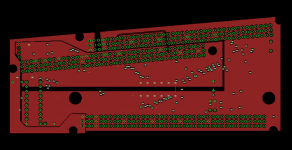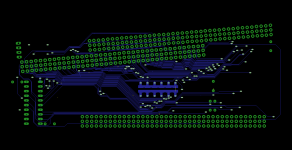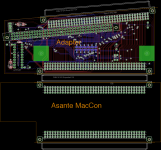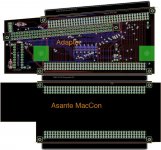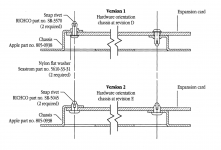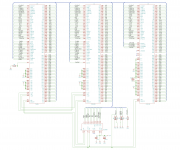Bolle
Well-known member
I hope you do not find any major errors1. Triple-blind-check and make sure everything is in order. For this, I will remove all the components from the board so I get no interaction from resistors or capacitors while I noodle it all out.
Spent the last two days laying tracks:
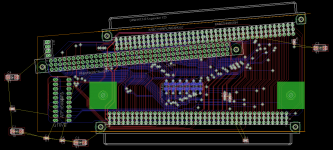
I was able to do most of it on two layers. Only very few connections had to be routed in one of the inner layers. It's all 6/6 spacing, so having the board fabbed should be relatively cheap.
There are big ground and 5V planes in the two inner layers wherever possible. It will have 6 big SMD solder pads to jumper in 0 Ohms resistors for jumping PDS slot power to the Cache slot. Without the jumpers the external floppy power connector is used to power the Cache slot.
PDS passthrough will always be powered by the host PDS slot.



